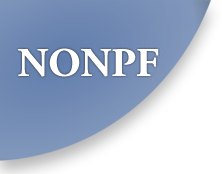Assessment of Diagnostic Reasoning Using Digital Standardized Patients
Friday, April 24, 2015
Key Ballroom 11-12 (Hilton Baltimore)
Kathleen Schachman, PhD, Nursing, Saginaw Valley State University, Saginaw, MI, Deanna Babb, DNP, APRN, FNP, BC, College of Nursing, Montana State University, Great Falls, MT and Julie Pullen, MSN, GNP, NP-C, Nursing, Montana State University, Billings, MT
Abstract:
Information technology offers abundant opportunities to create novel approaches in advanced nursing education through the use of Digital Standardized Patients (DSPs). DSPs are interactive computer simulations of patients in clinical scenarios for purposes of healthcare training, education, or assessment. This study describes the integration of DSPs as a tool to facilitate the development and application of diagnostic reasoning skills in nurse practitioner students. Diagnostic reasoning refers to a set of cognitive processes used to discern the relevance of evidence in order to arrive at sound judgments about the diagnosis of a particular patient. It involves self-communication or an internal dialogue that one engages in before, during, and after a task, and as such, is not directly observable for assessment purposes. DSPs provide an ideal environment to indirectly observe and evaluate this process, as faculty are able to monitor the sequence and quality of interactions between the student and the DSP. This “virtual encounter” also enables the student to actively reflect upon their interactions using a think-aloud method to capture their spontaneous thoughts and reactions.
In this study, DSPs were used on a weekly basis to supplement a differential diagnosis course in a doctoral nursing degree program, prior to clinical immersion. Eighteen nurse practitioner students participated. Reflective journals provided insight into students’ diagnostic reasoning process. Students developed preliminary diagnostic hypotheses based on a core nursing knowledge, intuition, and pattern recognition. Hypotheses were tested and refined through further data collection, with students weighing the relative value of the collective evidence to arrive at a working diagnosis. By comparing their diagnostic reasoning process and outcomes to an exemplary model, students were able to self-critique their performance and identify the source of any diagnostic errors. Over time, students were able to refine their data collection and analytic skills, moving from a disorganized and overly broad approach to a more honed and focused interaction. This resulted in faster and more accurate assessments, coupled with cost-effective utilization of diagnostic studies. Students reported increased confidence in and cognitive awareness of the diagnostic reasoning process, and appreciated the forgiving nature of the simulated environment. Broader implications are discussed.

